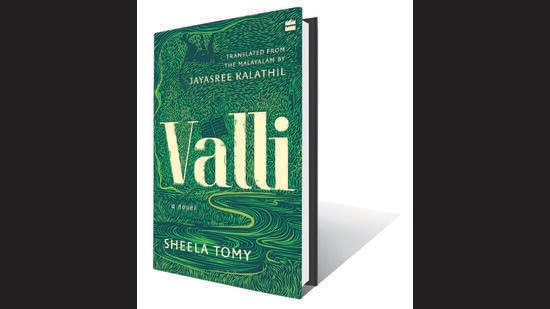MEDIA
Review: Valli by Sheela Tomy
www.hindustantimes.com | November 5, 2022
Set in Wayanad in Kerala, home to Adivasis and indigenous communities, Sheela Tomy’s dense novel bemoans the loss of a land where she grew up and documents its sustained exploitation.
I couldn’t think of a better word than “immediate” to describe Valli, Sheela Tomy’s award winning debut Malayalam novel translated into English by Jayasree Kalathil. Kalathil, whose earlier translations include S Hareesh’s Meesha and N Prabhakaran’s Diary of a Malayali Madman among others, has done us a huge favour once again by rendering Valli into English. It has allowed us to access the rich imaginative landscape of Tomy’s writing and the issues simmering in the novel. I also say “immediate” because Valli is indeed a story of exploitation and gradual extinction of natural resources falling prey to excessive human greed. The consequences of such an onslaught is for all of us to see – increasing floods, landslides, natural calamities of various kinds. This sense of immediacy, however, doesn’t take away from the story that the author builds in the novel, as dense as the forest where it is set.

In her novel, Tomy bemoans the loss of a land where she grew up and chronologically documents its sustained exploitation. I also read the novel as a warning to all those who care, to amend, to reform, to stand guard. Set in Wayanad, a rural district in the Western Ghats in Kerala and home to Adivasis and indigenous communities, Tomy’s unflinching portrayal of the difficulty of living in the region reminds me of a conversation with a friend who unaccusingly asked why do city folks romanticise living in the hills so much? The difficulties of living such a life remain unseen or unknown to visitors absorbed in the beauty of the region and enjoying the luxuries of tourism. Their stay, short lived, is impervious to the hazards of regular living. They end up seeing a curated, picture postcard view of the place devoid of its social, natural and economic complexities. Describing the daily routine of a woman, Tomy writes, “She watched the Wayanadan women who scurried around sowing, planting, weeding, harvesting, threshing, preparing the harvest, cleaning, washing, grinding spices, pounding paddy until she, too, learned how to do it all.”
In her narration, Tomy holds unchecked and unethical tourism responsible for the gradual destruction of the terrain. Historically, local conservation forces organised themselves to protect their land. The region is no stranger to violence and atrocities on Adivasis. It has also witnessed workers’ struggles demanding better wages and working conditions. All of this is captured in the novel which serves as a mirror to what has transpired and perhaps continues to agitate several parts of the country when locals resist corporate or governmental attempts to grab their land. But Valli is much more than a sociology of the land.
It is a remarkable people’s history of Wayanad. The story of life in the region is told through various characters in the novel such as Thomas, Sara, Isabella, Padmanabhan, Joseph, Susan, Basavan, Peter, Lucy and Tessa, amongst many others. The writer is from Wayanad and many of the characters in the novel are based on people she knows. I think of Valli as a people’s novel teeming with their voices and written by one of their own to narrate their plight. Their stories are now being institutionalised through the novel. It is an inclusive approach to writing history and more so at a time when people’s narratives and struggles are at the centre of contemporary discourses in historiography.

I am also tempted to call Valli a novel of landscape because the characters and their actions are shaped in many ways by the landscape they inhabit. Often, the portrayal of the landscape is akin to that of the character being talked about. This major stylistic and formal achievement of the novel must be emphasised because commentaries on work that is heavily invested in the environment, ecology and social movements tend to overlook the brilliance of its craft. I could sense, feel, touch, smell, see the terrain in Tomy’s writing and how remarkably she interweaves local stories, myths, folklore and diary entries and uses them effectively as narrative devices in the novel.
At the end, Susan bequeaths the forests to her daughter, Tessa -- the only gift she leaves for her sole heir. This gift is also a responsibility. Tessa is the future. Perhaps she will be the custodian of the forest and its memories and determine the world they want to inhabit and leave behind for their progeny. Such is also the role of the translator: to determine what might be read and remembered from the dense forest of languages.
-Prof. Kunal Ray, iterary & cultural studies
(Source:- https://www.hindustantimes.com/books/review-valli-by-sheela-tomy-101667593551127.html )

